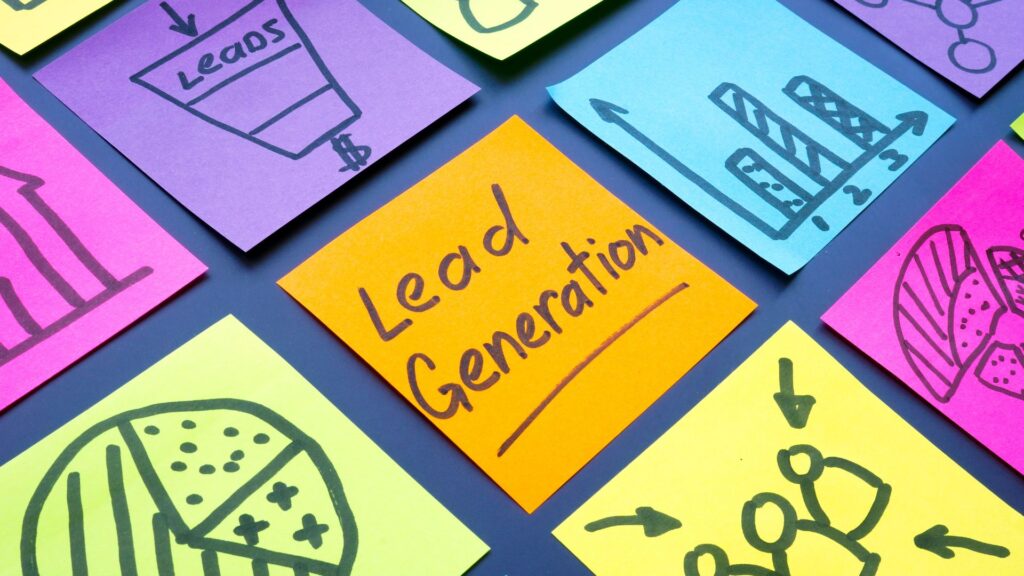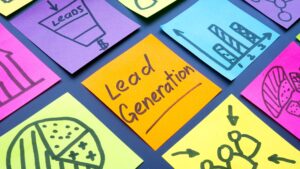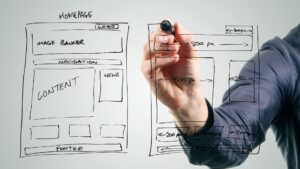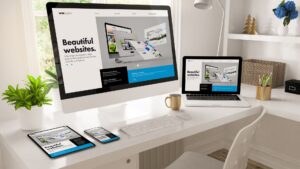In digital marketing, traffic simply means the flow of visitors coming to your website or landing pages. But for businesses focused on lead generation, understanding the different types of traffic for lead generation isn’t just about numbers — it’s about quality. Some visitors are ready to convert into leads, while others are just browsing, and knowing the difference helps you focus on the traffic sources that truly matter.
By understanding the different kinds of traffic and how they impact your business, you can create a strategy that attracts not only more visitors but also the right ones. Let’s explore the major types of traffic that fuel lead generation.
Understanding the Different Types of Traffic for Lead Generation
Before diving into each category, it’s important to see how different kinds of traffic contribute to your overall lead generation strategy. Each source has its own strengths and can bring in potential customers at various stages of the buyer’s journey.
1. Organic Traffic (SEO Optimized Website)
Organic traffic comes from people who discover your website through unpaid search results. These are users who type queries into Google or Bing and click on your site because it appears naturally in the results.
- Why it matters: Organic traffic is intent-driven. These visitors are already searching for answers, which makes them highly valuable as leads.
- Example: A dental clinic ranking for “best dentures in Christchurch” attracts people actively looking for their services.
- How to maximize it: Invest in SEO — publish optimized content, improve site speed, and target keywords that match your audience’s intent.
Learn Why Every Business Needs a Website in 2025
2. Content Traffic (Blogs and Resources)
Blogs, guides, case studies, and other content act as magnets for potential customers. Content answers questions, builds trust, and introduces your brand.
- Why it matters: Content doesn’t just bring in visitors — it nurtures them. By the time they fill out a form or request a quote, they’ve already developed trust in your expertise.
- Example: A software company writing a blog on “how to simplify payroll” draws in business owners who later sign up for a free trial.
- How to maximize it: End every blog with a clear CTA — newsletter sign-ups, free downloads, or consultation offers.

3. Social Media Traffic
Social platforms like Facebook, Instagram, LinkedIn, TikTok, and X (Twitter) send visitors to your website through posts, ads, and shared content.
- Why it matters: Social media builds awareness and keeps your brand visible. It’s a great way to funnel casual browsers into leads through engaging content.
- Example: A real estate agent shares housing tips on TikTok, then directs followers to download a free “Home Buyer’s Guide” from their website.
- How to maximize it: Mix storytelling with promotions. Use lead magnets (guides, discounts, free tools) to capture leads from social platforms.
Learn Why Small Businesses Need a Social Media Presence in 2025
So, where should you start? Let’s look at the top 5 social media platforms for free traffic:
- Facebook – With about 3.07 billion monthly active users, Facebook is still the king of community groups and brand pages. A single post in the right group can drive plenty of visitors to your site.
- Instagram – Over 2 billion users (monthly active) are on Instagram. Perfect for visual content. Reels, carousels, and stories are easy ways to grab attention and send curious followers to your offers.
- LinkedIn – This platform has over 1 billion users worldwide. If you’re in B2B, it’s a goldmine. Share insights, engage in industry conversations, and you’ll catch the eye of decision-makers who can become leads.
- TikTok – Currently projected to have around 955 million monthly users by 2025. Short videos can go viral fast. Even if you’re just starting, TikTok’s algorithm can put your content in front of the right people.
- X (Twitter) – Also known simply as “X,” this platform is reported to have around 600 million monthly active users. Quick updates, threads, and hashtags make it a great platform for sparking conversations and linking back to your website.
4. Paid Traffic (Ads)
Paid ads include Google Ads, Facebook Ads, LinkedIn Ads, and display banners. These are clicks you pay for — but they’re highly targeted.
- Why it matters: Paid traffic delivers instant visibility and lets you target specific audiences by demographics, interests, or behaviors.
- Example: An e-commerce brand running Facebook ads with a limited-time discount generates quick traffic and leads.
- How to maximize it: Drive ad clicks to tailored landing pages, not your homepage. Focus on one goal (sign-ups, purchases, downloads).
5. Direct Traffic
Direct traffic comes from people typing your web address directly into their browser or using a bookmark.
- Why it matters: These visitors already know your brand. They may be past customers, referrals, or prospects who’ve heard about you elsewhere. They’re often closer to becoming leads.
- Example: A conference attendee who remembers your business card types in your URL to learn more and fills out a contact form.
- How to maximize it: Make your brand memorable. Share your URL in presentations, print materials, and offline campaigns.
6. Referral Traffic
Referral traffic happens when other websites send visitors your way through links. This could be from guest blogs, partnerships, or online directories.
- Why it matters: Referral visitors arrive with built-in trust because they discovered you through another credible source.
- Example: A wellness spa listed in a local business directory attracts referral leads who book appointments.
- How to maximize it: Build partnerships, guest post on relevant blogs, and list your business in trusted directories.
7. Affiliate Traffic
Affiliate traffic comes from partners — bloggers, influencers, or businesses — who promote your services in exchange for a commission on sales or leads.
- Why it matters: Affiliates extend your reach into new audiences. They do the marketing, and you benefit from the traffic.
- Example: A fitness brand working with influencers who promote supplements through unique affiliate links.
- How to maximize it: Work with affiliates who share your target audience. Provide them with quality content and trackable links.
8. Sponsor Traffic
Sponsorships generate traffic when your brand is featured in sponsored events, podcasts, newsletters, or community programs.
- Why it matters: Sponsorship lends credibility. Leads often view sponsored businesses as more trustworthy.
- Example: A finance firm sponsoring a webinar on “Smart Investment Tips” generates sign-ups from attendees.
- How to maximize it: Choose sponsorship opportunities where your ideal customers already spend time.
9. Email Traffic
Email traffic comes from links within newsletters and email campaigns.
- Why it matters: Email subscribers are warm leads. They already know you, so conversion rates are often higher.
- Example: A retailer emails a “20% Off Exclusive Offer,” and subscribers click through to claim the discount.
- How to maximize it: Personalize your campaigns, segment your list, and always include a clear CTA.
10. Retargeting & Display Traffic
Retargeting brings back visitors who left your site without converting, while display ads increase brand visibility across websites.
- Why it matters: Many people don’t convert on the first visit. Retargeting gives you another chance to capture their interest.
- Example: A shopper browses for shoes on your site, leaves, and later sees a display ad offering “Free Shipping” — prompting them to return and buy.
- How to maximize it: Use retargeting ads with special offers, reminders, or content tailored to what they viewed earlier.
Final Thoughts
Lead generation thrives on the right mix of traffic. To succeed, businesses need to understand the different types of traffic for lead generation and how each source plays its part. Some sources, like organic search and blogs, build long-term sustainability. Others, like paid ads and social media, provide immediate results. Meanwhile, affiliates, sponsors, referrals, and email campaigns expand your reach and keep leads warm. The more balanced your traffic strategy, the stronger your lead pipeline becomes.
By diversifying your traffic strategy and focusing on quality, you’ll not only attract more visitors but also turn those visitors into meaningful leads who are ready to engage with your business.






